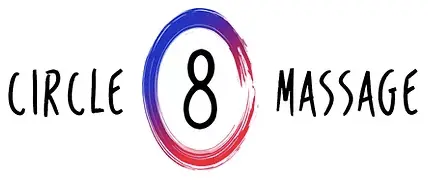Injury management has changed over the years. In the past, the acronyms ICE (Ice Compression Elevation) and RICE (Rest Ice Compression Elevation) were popular. Next was the acronym POLICE (Protect, Optimum Load, Ice, Compression, Elevation). These acronyms provided a great way to remind us how to deal with and manage acute stages of injuries. Over time, new research has resulted in updating these acronyms and the treatment that goes with them.
The most recent acronym for managing acute injuries and promoting healing is PEACE & Love. That’s a long one, for sure, but it offers a better way (according to the current science) to treat and heal after an injury.
Some of the most common acute injuries include sprains, strains, calf tears, and more. These are some examples of injuries that can be treated successfully with the PEACE & LOVE acronym. We’ll take a look at this acronym and what it means, but first, let’s review how acute injuries were treated in the past.
Examples of Past Treatment of Acute Injuries
One of the biggest updates regards “rest.” Today, we understand that early movement is healthier, as it works to contract muscles, promotes lymphatic drainage, reduces fluid congestion, and restores range of motion (as tolerated). Rest is better understood as resting from painful activities and movements. Resting is essential during the first few days after an injury; however, gentle movement should be introduced slowly after this period.
In addition, thoughts about applying ice have changed. It was once the right thing to pack ice on all injuries as soon as possible. Now, however, it’s recommended to consider whether ice is the right remedy at specific stages of recovery. Ice was thought to stop inflammation; however, studies have shown that ice doesn’t stop the inflammation process, and the cold doesn’t penetrate deep enough to reduce tissue temperature for deeper tissues effectively.
Instead, medicine recognizes that inflammation is a part of the healing process and that it’s a crucial part of the healing process that should not be disrupted entirely. So, treatment may or may not involve cold therapy, depending on the decision of the healthcare professional and the circumstances.
What is certain is that ice does help with pain management. It’s also used to manage swelling and secondary effects of swelling (with the surrounding tissue). These are valuable effects. So, ice needs to be a part of acute injury management, but it should be used appropriately, according to the circumstances.
These are only a couple of examples of how research has changed the treatment of acute injuries. In the following section, we’ll review the acronym PEACE & LOVE and how acute injuries are treated now.
What is PEACE & LOVE Treatment for Acute Injuries?
The new acronym of PEACE & LOVE was developed in 2019, with each letter standing for the type of treatment needed after an injury, during the acute phase (right after the injury has happened).
PEACE
“Immediately after a soft tissue injury, do no harm and let PEACE guide your approach.”
Here’s what PEACE stands for and the treatment necessary for this phase:
P: Protection
Protecting the injured tissue is essential; however, this does not mean complete rest. Instead, movement is necessary to promote healing. It’s necessary to put the tissue into ranges of motion that cause more damage. So, the joint must be protected by avoiding all activities and movements that increase pain. In the first few days after an injury, pain can be a good indicator to know when to stop. Protect the injured tissue.
E: Elevation
After an injury, swelling and congestion are the body’s normal response and part of the healing process. Excessive swelling and congestion can have negative effects, however. For this reason, it’s best to elevate the injury to promote lymphatic drainage and reduce fluid from settling in the area and not moving out. The injury must be elevated higher than the heart to allow gravity to help bring fluids and congestion from the area.
A: Avoid Anti-Inflammatories
Inflammation is a necessary part of the healing process. So, it’s best to avoid taking anti-inflammatories right after an injury. Doing so could have a negative impact on the healing process by halting the initial healing phase.
The body is naturally made to activate the inflammatory response, which triggers a range of healing events. These eventually lead to the next phase of healing and generating new tissue. When the system is allowed to work, it can work wonders. While this is the guide for standard care, it doesn’t apply to all cases.
If inflammation doesn’t end and it sets off a pain-inflammation cycle, adaptations may need to be made. It’s always best to follow the instructions of your healthcare provider.
C: Compression
External compression over the injury can reduce swelling and edema. Persistent or excessive swelling and edema may add congestion to the area. This could slow the healing process or cause secondary tissue damage. An elastic bandage or specialised taping can be effective in adding compression to the injury and keeping swelling and congestion down.
E: Education
Gaining an understanding of the condition and the healing process can help you to make better decisions during your recovery. It’s always best to listen to your body and allow it to do what it does naturally to heal. Active recovery is better than passive recovery, so it’s best to choose treatments that keep you moving and allow muscle contraction rather than complete rest.
LOVE
After the first days have passed, soft tissues need LOVE.”
L: Load
Tissues need load to heal properly. Tissue regeneration and remodelling are based on the forces and load applied. So, it’s best to gradually apply appropriate loads as soon as possible. As your tolerance increases, load should also increase, and capacity will increase.
Listen to your body and let pain be the guide as you begin to move, apply load/weight, and strengthen the injured site. A physical therapist can determine what the appropriate and optimal loading is so healing takes place without further damage.
O: Optimism
Negativity can hinder the healing process and cause a much longer recovery period than is necessary. Managing your mindset can be challenging; however, it’s crucial to successful healing.
V: Vascularization
Cardiovascular exercise increases blood flow to injured tissues and enables optimal healing. Aerobic exercise can also reduce the need for pain medication and improve function.
E: Exercise
Exercise is crucial to restoring mobility and strength and getting back to normal activity levels. It also works to prevent future injuries. It’s best to choose exercises that don’t stop the healing process or cause further damage. Remember not to “put into the pain.” However, as you feel better, gradually increase intensity, load, and difficulty to promote healing and reduce the risk of future injuries.
Summing It Up
So, there you have it! PEACE & LOVE is easy to remember once you’ve read through the acronym. This is an effective way to help your body heal after an acute injury.
And if you have any questions, be sure to ask your doctor or physiotherapist for guidance.







